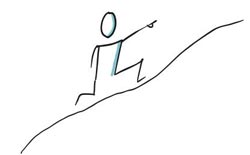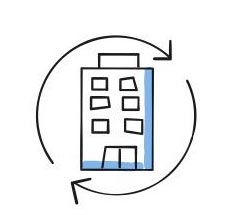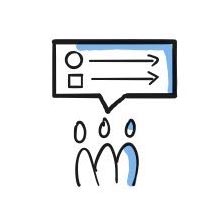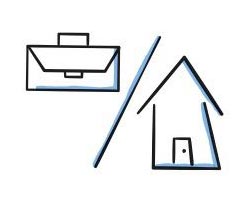 Back to Resources
Back to Resources
As we head through to recovery, many people are using the term ‘returning to work’, but for many, this means different things. Each business and each individual has a unique set of circumstances. Organisations need to be thinking holistically on how to chart the course ahead. As we’ve been working with our clients, we’ve seen five key areas emerge as critical areas to get right in the ‘return to work phase’. We’ve listed below, some questions you should be looking to answer, as well as links to resources which we hope you will find useful.
Wellbeing (People and Culture)

With the diversity of individuals’ experiences, situations and preferences navigating an uncertain landscape,diversity is also needed to support and guide wellbeing. While many employers have reported an increase in productivity during this time, they also highlight an increasing number of employees in ‘burn-out’, which could see impacts on businesses beyond the pandemic.
• How are all people across the organisation actually going? How do you know? Circumstances for individuals, the organisation and its culture are likely to need several different feedback options to be available to cater for different needs.
• There is likely to be a plethora of issues to tackle for People & Culture (HR), Legal and OH&S, but try not to get lost in just making (or updating) policy and forgetting the human connection. Be mindful of the Employee Experience (eX) you are creating.
• Mental anxiety is already on the rise and must be a significant consideration in caring for people in the months ahead. Being (and remaining) a highly changeable environment at home, with broader family/friends circles, at the State, Country and global levels, there will be a multitude of influences affecting your people at varying, unpredictable and often at delayed times.
• Is your organisation only locally based? What impacts or changes are required for other geographies and countries where your people are?
• Now is the ideal time to reskill your workforce. Do you have the capabilities you need going forward? What training will get you there?
• Do you have counter-measures in place to support employees and their leaders to recognise and manage burnout?
Resources
- Inc. A New Survey of More Than 700,000 Employees Reveals Another Crisis Facing the Workplace
- Mckinsey: COVID-19 and reskilling the workforce
- Forbes: Employee experience is more important than ever during the covid-19 pandemic
- LinkedIn: Anxious about returning to normal?
Leadership
 As leaders, now is not the time to make assumptions but to step forward with authenticity and vulnerability and really connect on a human level, embrace empathy, listen and understand. Role-model the behaviours needed to support a culture that, despite COVID-19, supports employees to be the best versions of themselves.
As leaders, now is not the time to make assumptions but to step forward with authenticity and vulnerability and really connect on a human level, embrace empathy, listen and understand. Role-model the behaviours needed to support a culture that, despite COVID-19, supports employees to be the best versions of themselves.
• Have you asked your people what they want to do regarding the return to the office, what their concerns are and have included them in considering solutions?
• What ongoing or new feedback loops will you have in place to understand how your employees are faring – and feeling?
• What are the key behaviours your organisation wants to exhibit, are the leaders (all of them across all levels) aware of these? Demonstrating these?
• How well are you communicating? Are they robust, regular and meaningful or polished and robotic?
• Do you have ‘back to work’ plans (plural, depending on multiple scenarios) and how flexible, emergent and responsive do they continue to be? Do you have scheduled inspection points so they can be adapted based on feedback from all levels?
Resources
- Gallup: What employees need from Leadership right now
- Catapult.co.nz: Covid 19 Leader Playbook
- Mckinsey: Covid19 Briefing Materials – June 2020 (pdf)
Physical Environment & Logistics
 This one can be both the easier and the more difficult to tackle. The physical nature and constraints can make it easier to grasp the challenges involved and ideate solution options but the constraint in the system is more fixed or harder to change when it comes to aspects such as available office space and public transport.
This one can be both the easier and the more difficult to tackle. The physical nature and constraints can make it easier to grasp the challenges involved and ideate solution options but the constraint in the system is more fixed or harder to change when it comes to aspects such as available office space and public transport.
• How are people getting to the office (if driving – parking? if public transport – capacity vs timing)
• How (with social distancing) will lifts be managed for people to get to their floors in the morning (are entry time windows per person viable, will stairs be available, can fire doors be utilised?)
• Will your workforce be divided into shifts or have staggered days (Team Green: Tues and Thurs, Team Blue: the other days, etc)
• What happens at heavy foot traffic times e.g. lunch/go home with the wait for lifts?
• What needs to happen to desk setups/distances/configuration
• Meeting room considerations: regulations for size vs duration vs numbers, etc
• Have cleaning protocols, regularity and quality across the office been updated as required?
• Is there flexibility in the system so that where more practical (e.g. a team working virtually in a workshop) can stay work from home rather than coming in for their allotted ‘office shift’
Resources
Effectiveness
 On the road ahead, there will be high variability in the ability and appetite for people to return to the office, creating challenges of mixed office/remote working, work habits and tooling. This will mean navigating the balance to establish new norms for working (effectively and sustainably) while continuing to deliver on individual and collective commitments.
On the road ahead, there will be high variability in the ability and appetite for people to return to the office, creating challenges of mixed office/remote working, work habits and tooling. This will mean navigating the balance to establish new norms for working (effectively and sustainably) while continuing to deliver on individual and collective commitments.
• Imagine if it was you, your family or friend being at risk (let alone impacted), how would this impact you sitting in an office attempting to work? What does your organisation need to be doing to support everyone in a range of circumstances?
• Considering all the ramifications and interruptions of a potential split/staggered/reduced workforce in the office, how will people make time to be collaborating, meeting, solving problems and getting things done? Do they have the right tooling available to support them?
• Reflection and learning is an important part of building resilience and strength – is your business providing employees with the space and capacity to do so?
• Do you have a feedback loop for employees to measure effectiveness, provide ideas for improvement?
• Are priorities and work transparently across the business? Are there regular opportunities for people to synchronise regardless of location?
• Do you have a system in place that instead of measuring ‘are we working hard enough’ we can measure ‘are we working smart enough’. The system should be looking to measure how well work is flowing in the business, identifying and removing constraints and impediments.
Resources
- EPiC: Measure your team’s effectiveness with the remote working radar
- Bloomberg: Working From Home in Covid Era Means Three More Hours on the Job
- Forbes: Why Agile Is The Mindset To Get Us Through The COVID Crisis: 4 Lessons From Agile For Today And The New Normal
Future of the Workplace
 As seen with previous historical examples of dramatic world disruption, it opens individuals’ and organisations’ eyes to new possibilities and drives new innovations. There is now the opportunity to consider what changes can be adopted to embrace in the future for positive outcomes.
As seen with previous historical examples of dramatic world disruption, it opens individuals’ and organisations’ eyes to new possibilities and drives new innovations. There is now the opportunity to consider what changes can be adopted to embrace in the future for positive outcomes.
• Will you need / do you want the same office capacity? Do you even need office space? At EPiC, for example, we have withdrawn from our Australian commercial space for the foreseeable future and we know other organisations who are re-evaluating their need for the same.
• What will your flexible working policy look like going forward? What impact does this have to equipment leasing arrangements, home office allowances, OH&S and legal liability changes, etc
• How will you co-create and innovate in the future? Is this something that is best done in person with a view that the “doing the work” can be done remotely more efficiently.
• What will your policies be for hiring talent going forward? Will you allow talent to work from non-metropolitan or interstate geographies?
• What will your organisation do with the potential savings on property? Could these savings be used to fund improvements and innovations or improve bottom line profits?
Resources
- Gartner: 9 Future of Work Trends Post-COVID-19
- Deloitte: The future of work after COVID-19
- Forbes: The Post-COVID-19 Organization
Conclusion
Above all else, returning to the office is about taking with us our learnings from this period. It’s been a unique point in global history where we have had a common adversary, and yet been affected in so many different ways. For some, it’s meant a greater connection to our team members as we have had windows into their home-life during Covid, and for others painful isolation. It’s been a sharp reality call that despite our comfort in long-term strategies and technological advances, we can still be caught unaware. Take time to reflect on the learnings from this period and continue to support your employees and business to use these for a better tomorrow.





